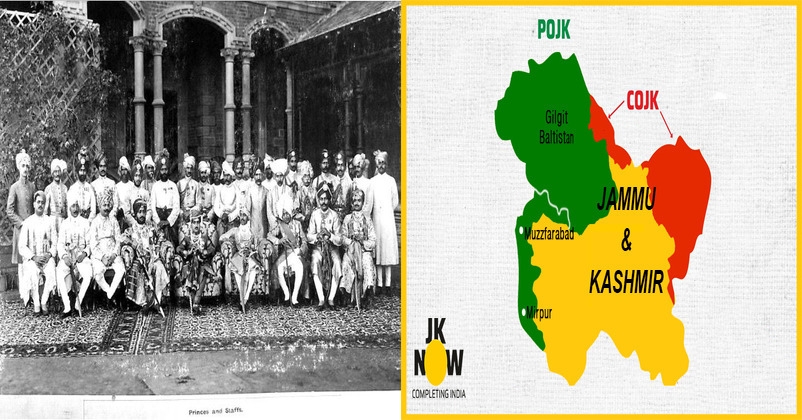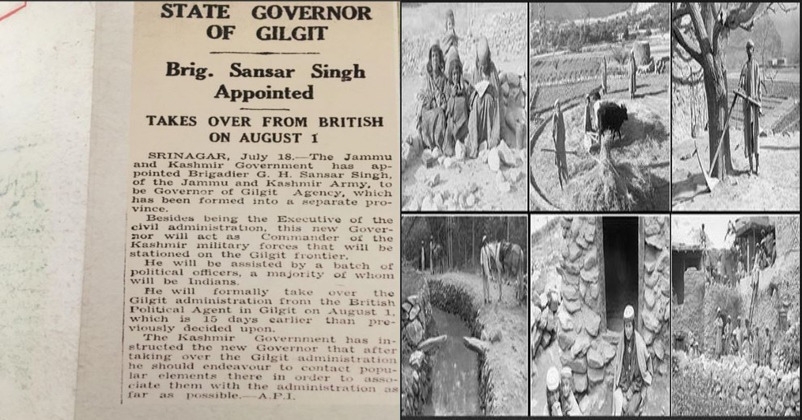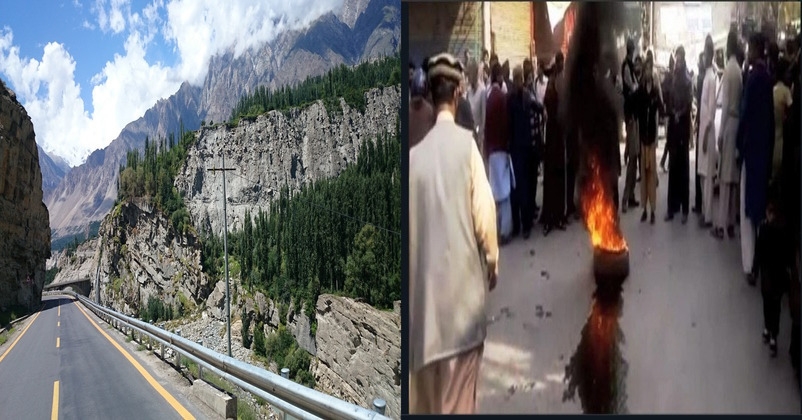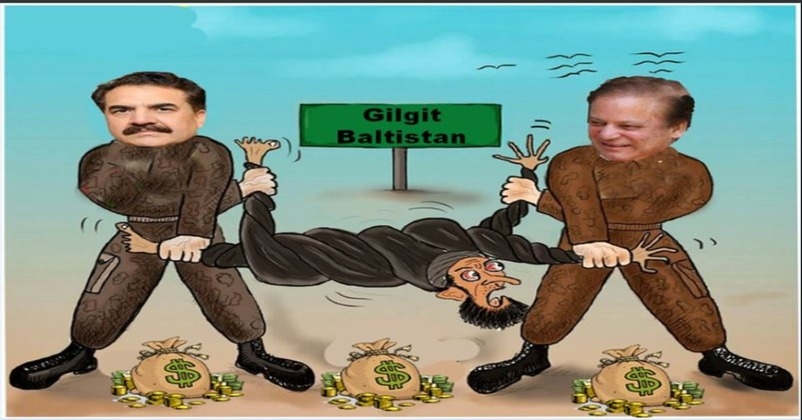#POJKFacts Pakistan destroying Gilgit-Baltistan and robbing the people of this region
| 21-Feb-2019 |

Gilgit-Baltistan is spread in the area of around 72,971 sq. km., which belongs to India, as the Instrument of Accession (IoA) was signed by Maharaja Hari Singh, the ruler of Jammu and Kashmir in favour of India. This region is known for its scenic beauty but it has been consistently losing its sheen because of the plunder of Pakistan here. Whether it is destroying its natural beauty, exploitation of natural resources, construction of mega dams, demographic changes, development of mage project etc. all have benefitted Pakistan and the aboriginal people are remaining at receiving end. Sectarian violence has become the order of the day due to the Pakistan stated policy of Sunni Islamization and exploitation of this region.

Some glimpse of History
Gilgit-Baltistan has once evolved from the two separate political entities viz. Dardistan or Gilgit and Baltistan. But these two entities were untied during Sikh rule when Gilgit was captured by Syed Nathe Shah, the commander of Sheikh Gulam Mohi-ud-din, the Governor of Sikhs in Kashmir in 1842 and Baltistan was captured in 1840 by General Zorawar Singh for Dogra. By 1870, the treaties were signed with the rulers of Hunza and Nagar making them vassals of Kashmir. Hence, it constitutes an integral part of Jammu and Kashmir.
Illegal Occupation of Gilgit-Baltistan
Pakistan rose religious sentiments among the Muslim soldiers in Maharaja’s Army during 1947. Hence, with the assistance of Pakistan, a few local Muslims captured the area. Also, Pakistan’s inclusion in Western parts of defence during cold-war period indicates that the British must have ensured that the control of this strategically important region should remain in the hands of Pakistan. Pakistan has ensured that democratic structures must not be introduced in this region since it has illegally occupied it in 1947. It is controlled by the Ministry of Kashmir Affairs from Karachi. Though Pakistan Government recognized the authority of Maharaja of Jammu and Kashmir over this region, when it entered in standstill agreement with him on August 12, 1947, but Pakistan violated all the laws when it invaded on Gilgit-Baltistan and occupied it illegally. Presently, Mirpur, Muzaffarabad, Gilgit, and Baltistan, covering one-third of the total area of around 2,22,798 sq. km. of the state of J&K are under illegal occupation of Pakistan.
Sunni Islamization and other factors of discontent among people of this region
Pakistan was founded as a theocratic nation, wherein Islam is the religion of the country. 96% of the country’s population follow Islam and out of this 95 % are from the Sunni sect. Gilgit-Baltistan is the Shia majority region and Pakistan is making all attempts to change the demography of the region and sectarian violence is often reported as a result of these attempts. The sectarian violence has increased in the region since 1980s because of various reasons like the construction of Karakoram Highway, General Zia’s policy of Sunni Islamization, poor economic conditions, the absence of government’s educational institutions, mushrooming of madrasas that preach sectarian hatred and extremism, ineffective judicial system and fragile political milieu.
Present status of Gilgit-Baltistan
This region is still identified as the part of the state of Jammu and Kashmir, which clearly reveals that Pakistan has illegally occupied it.
Sectarian violence
The present sect-wise division of the region is 41% Shias, 30% Sunnis, 24% Ismailis and 6% Noorbakhshis. Shia constituted 85% of the total population during 1948 but in 1974 the Government of Pakistan, under the leadership of President Zulfiqar Ali Bhutto abrogated the State Subject Rule in Gilgit-Baltistan. This abrogation allowed the settlement of the people from Pakistan and the demographic changes occurred. This paved the way for settling outsiders, mostly Sunni ethnic Pathans and Punjabis in Gilgit-Baltistan region and the violence was also started reporting since then. According to one estimate, 30,000 people fled this region due to increased sectarian violence support by Pakistan Government. The minority community of Pakistan likes the Shias, Ismailis, Sufis, and Ahmadis are targeted by Sunni sectarian groups in this region.

General Zia policy of Sunni Islamization
General Zia was a supporter of Sunni Islam and he used it to establish military rule in Gilgit-Baltistan. In his programme of Islamization ‘Zakat’, as per the prescriptions of the Hanafi school of Sunni law was introduced, which was opposed by Shias. Though Shias were exempted from the tax, in the 1980s, because of their protest but this incident sowed the seeds of anti-Shia sentiments. Subsequently, Islamabad started supporting Sunni Ulemas, and extremist groups that further intensified Shia-Sunni conflict. This helped the Pakistan army to keep its control over this strategically important region. Even in 1998 Jalalabad tragedy, General Zia administration did nothing to stop sectarian violence that was particularly targeting Shias in this region. This same policy of Sunni Islamization was adopted by the successive Governments.
Impact of Madrasas
The sectarian violence increased due to the policy of General Zia to support madrasas. The number of students enrolled in these madrasas was much more than the students enrolled in the school of Gilgit-Baltistan. These madrasas teach supremacy of the religion and disapproval of other sects and military training was also provided to the students. Theology is also taught in these Madrasas.
Textbook controversy
In 1999, the federal education Ministry of Pakistan suddenly introduced amended textbooks in Gilgit-Baltistan region that were completely based on Sunni believes and practices. Though Shia protested yet not much headway was made. On August 15, 2003, violent protest broke out in Skardu. In September 2003, Sunni students and teachers protested in support of keeping the changes in the book intact. Afterward, the violence broke out between these two sects. Hence, the government made a minor modification in the book.
Impact of Karakoram Highway (KKH)
The KKH linking China with Pakistan through Gilgit-Baltistan resulted in the influx of weapons and drugs in the region. The all-weather road of KKH also allowed the influx of suspects from Pakistan. After any sectarian violence in Gilgit, the people mobility is affected on KKH, as Shias do not travel from Gilgit to Islamabad to avoid Sunni dominated Diamer District and Khyber Pakhtunkhwa and Sunnis avoid Shia area of Nagar.

Impact of China Pakistan Economic Corridor (CPEC)
CPEC is China funded multi-dollar project aims at establishing a network of highways, railways, oil pipelines, electrical power grids, fiber optic cables, and special economic zones, linking the Chinese trading hub of Kashgar in Xinjiang province with the Pakistani port city of Gwadar in Balochistan province. Though Pakistan asserts that the project would benefit Pakistan, China and Gilgit-Baltistan yet the people of Gilgit-Baltistan feel that this project will only trigger an ecological disaster, a demographic shift and land grabbing and it will threaten their unique culture. With the increase in movement of people from Pakistan and taking over business and administrative jobs here, people of this region feel that they would become minority in their own land. Sectarian violence and terrorist activities have also been increased as a result. A total number of 74 terrorist attacks have been reported from this region between 2007 and July 2014. Pakistan Taliban has also increased its influence in this region.

Islamabad has failed to win the support of the people of this region and Pakistan has been consistently impacting the peaceful environment in this region. Major demographic changes have also been observed due to Pakistan plunder in this region. The people of this region have paid a big price for the benefit of Pakistan who has been keeping this region into its illegal occupation.
Tags: